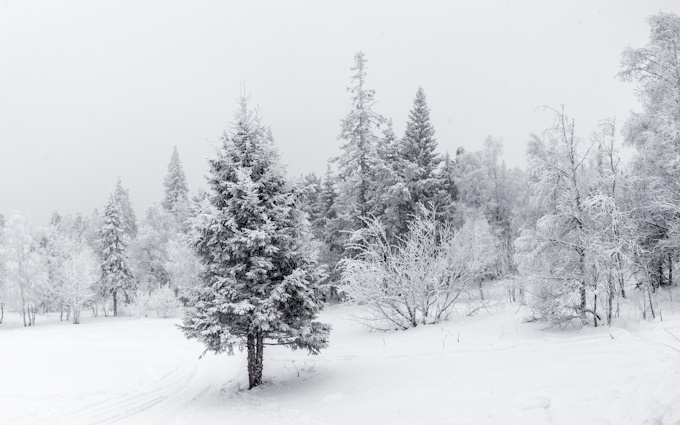What Homeowners Need to Know About Cold Weather Tree Care Services
As living organisms, your trees need sun, carbon dioxide, water, and nutrients to grow and thrive and make the oxygen we breathe. The trees that are deficient in these areas may become weak or sick, making them far more susceptible to disease, invasive pests, and structural issues. During the winter when trees are dormant, health deficiencies can take their toll.
Trees that aren’t prepared to handle the rigors of winter weather may experience branch breakage or issues within their root system.In addition to posing a threat to your home, property, and pedestrians, winter tree issues may require emergency tree services to sort out.
Naturally, this begs the question, “What can I do as a homeowner to help maintain the health of my trees during cold weather months?”
In this blog, we’ll explore the role that tree services in Kansas City play in keeping your trees healthy and the best practices surrounding tree fertilization.
The Advantages of Consulting with a Tree Care Service
The typical homeowner is not an arborist, which means it’s difficult for them to evaluate the current state of their trees. Common signs and symptoms of tree sickness or structural issues may go unnoticed, which is why it’s a good idea to enlist the help of a professional tree care service.
Because most tree services adhere to arborist-approved methods, they can quickly identify potential tree issues that may worsen during winter weather conditions. Additionally, they can make recommendations for solutions that will support your trees, especially those with structural issues and nutrient deficiencies. These services include:
- Cabling and bracing
- Tree fertilization
- Trimming and pruning
- Emergency tree service
Homeowners who wish to get an official diagnosis of their trees should contact their local tree care service and arrange an appointment. The initial assessment can be completed quickly and provides homeowners with peace of mind knowing that their trees can endure another round of Midwestern winter weather.
Knowing Your Tree Fertilization Options
Trees receive their nutrients from water, soil, and the air. However, in some cases, nutrient-deficient trees require a little extra help from property owners. This leads us to the topic of tree fertilization and best practices.
Tree fertilizer is offered in two main categories: chemical and organic. Both chemical and organic tree fertilizers deliver essential nutrients that trees need. Some chemical fertilizers contain high levels of synthetic potassium, phosphorus, and nitrogen.
Although these chemicals are beneficial in terms of plant growth, they pose a health risk to humans and pets. Chemical fertilizers also run the risk of contaminating groundwater, an essential component of sustaining tree life.
For these reasons, many tree services in Kansas City now offer organic tree fertilizers as a holistic alternative. Although they can be a bigger investment than synthetic tree fertilizers, organic options don’t pose a health risk to humans or animals, nor do they contaminate groundwater.
Tree Fertilization Best Practices
Applying tree fertilizer isn’t difficult to do, however, homeowners should familiarize themselves with arborist-approved best practices to ensure the job is done right. Further, tree fertilizer should only be applied to trees that require it during specific times of the year – either early spring or early winter, prior to the ground freezing.
Adhere to the following steps:
- Choose a tree fertilizer that is appropriate for your species of tree and region. You can find information online or consult with your local arborist or tree service.
- Calculate how far your roots extend from the base of your trees. This calculation determines how far out from the stump you will apply your tree fertilizer. A tree expert can help.
- Determine how much fertilizer you should apply to your trees. The type of fertilizer, root zone, and soil condition all factor in.
- Aerate your lawn prior to application. This is especially important if your soil is compacted. Aerating the lawn space around your tree makes it easier for the fertilizer to reach the root system.
- Apply the fertilizer so that it extends far enough from the trunk to cover the root zone.
Homeowners who aren’t confident in their ability to tackle lawn fertilization should rely on a tree service in Kansas City. Be sure to inquire about what type of fertilizer they use if you’re committed to sticking with organic products. Also keep in mind that the approach to lawn fertilization is dependent on the time of year and the condition of the ground.
Get In Touch with a Local Tree Care Service You Can Count On
Fertilizing your trees during the winter is a strategic investment in their long-term health and vitality. By providing essential nutrients at the right time, you’re setting the stage for robust spring growth, improved resistance to diseases and pests, and enhanced root development.
Choosing the right fertilizer tailored to your tree’s specific needs is key to maximizing the benefits of winter tree fertilization. Take advantage of the dormant season to nourish your trees, and you’ll reap the rewards in the form of lush foliage, vibrant blooms, and a resilient, thriving landscape come spring.
Contact a local tree service to get your trees inspected by professionals who follow arborist-approved methods of tree care. By proactively addressing the needs of your trees, you can effectively mitigate the chances of branch breakage, uprooting, and other issues that require emergency tree services.

